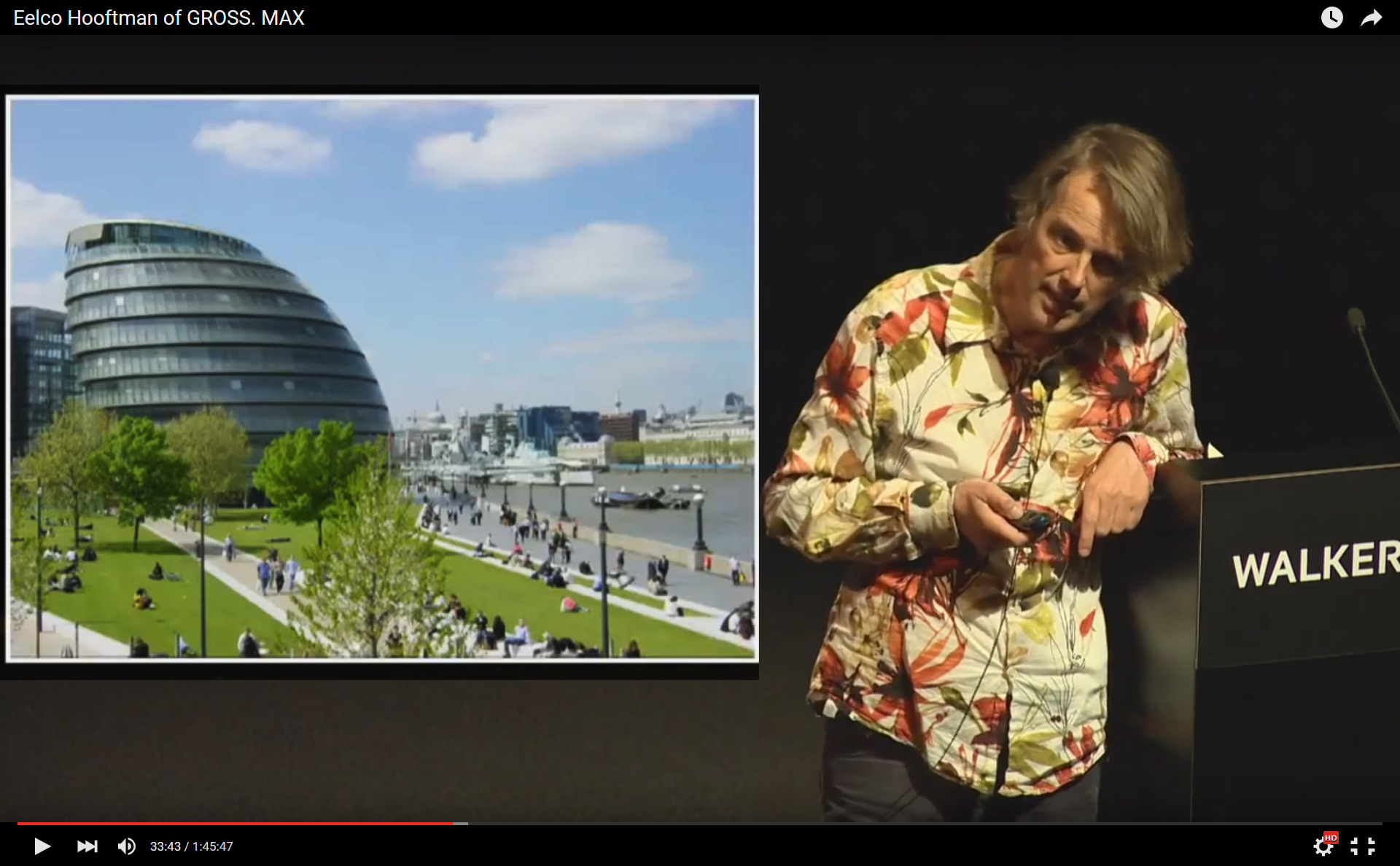Eelco Hooftman landscape architect GROSS. MAX Edinburgh
Eelco Hooftman studied landscape architecture at Wageningen and runs his practice GROSS. MAX from Edinburgh. Eelco is said to combine a Dutch sense of experimentation with a British sense of humour and German rigour. This lecture, delivered at the Walker Art Center Minneapolis in 2013, is relaxed, enjoyable and inspiring. Were I thinking about a career, it would make me want to be a landscape architect. Were I looking for design work, it would make me want to enter landscape architecture competitions. The summary, below, is not a transcript: it uses some quotation and some re-phrasing of points made by Eelco Hooftman. NB: if you don’t have time for the whole video, be sure to watch the animation which runs for 5 minutes (from 1:16:30 to 1:21:08).
As landscape architects we never have a tabula rasa – we are always writing chapters in a book. In the last ten years we have done many projects with Zaha Hadid and I have a love-hate relationship with architects.
Landscape architects need to be both telescopic and microscopic – always zooming in and zooming out. Landscape and townscape are part of the same spectrum. The landscape profession combines LAND + SCAPE + ARCHITECTURE, with ‘scape’ means ‘view’
Vermeer’s paintings often have maps on the wall, because the Dutch see landscape as a creation. When GROSS. MAX was launched as a practice in 1996, the great thing was that we had no work. This gave time to think and time to see. Images are important in landscape architecture and Gross Max is often more interested in in-between images than in ‘before’ or ‘after’ images.
I like to look at cities as landscapes but do not like the term ‘landscape urbanism’. It is a kind of hybrid between a poodle and a labrador. It is meant to be a new and trendy term but the idea is very old.
Nature starts to break up things. How can we do better? As a landscape architect you never invent a new project All you do is reinvent something that has been before.
At Potters Fields, the greatest success of the park is not so much the design but that we made it into a trust. All the money generated in the park can be spent on its maintenance.
Friedrich Nietzsche is one of my heroes. In explaining our landscape design for Templehof Airport in Berlin I quoted from The Gay Science 1882 (German: Die fröhliche Wissenschaft, literally “The Joyful Science”):
One day, and probably soon, we will need some recognition of what is missing primarily in our big cities: quiet and wide, expansive places for reflection–places with long, high ceilinged arcades for bad or all-too-sunny weather, where no shouts or noise from carriages can penetrate and where refined manners would prohibit even priests from praying aloud: a whole complex of buildings and sites that would give expression to the sublimity of contemplation and a stepping aside .
The jury for the Templehof Competition asked ‘How do you dare to celebrate a fascist building?’. I told them it would be a ‘two fingers up – Hitler will turn in his grave’.
You have to think of the park as part of a bigger structure. It’s a golden rule for landscape architects. We are megalomanics: if you give us a site we will make it as big as possible, at least as a conceptual idea. The park is not an object: it is a process. It is a transformation of nature and of social conditions. There was a problem with Berlin’s Ecological Taliban. We did not plan for nature conservation; we planned for nature activation. We have to activate landscapes. We have to kiss them alive. Landscape is about eventscapes. Cities are becoming events, no longer spaces for shopping. People are very inventive. We don’t have to patronise them. Human beings are like animals: give them an opportunity and they respond to it. Make democratic landscapes.
If you don’t work with users the project will suffer. Public consultation in the UK is tough. But the public is your biggest ally for convincing politicians.
You have to open up people’s eyes. You have to inspire. You have to be enthusiastic. You have to take people on a journey. The weakest part of every project is the design brief. As well as the client and the public, you have to ask what the site wants to be. It is a very relevant question. Louis Kahn asked what brick wants to be.
Cities need curators for their parks. Each year you should appoint a curator – one year a scientist, another year an artist. Then someone else.

